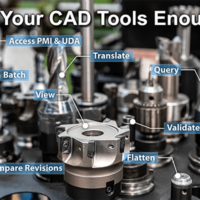
by Brad Strong | Dec 7, 2020 | Blog, CAD Translation, What's New |
Are your CAD tools empowering you to… Work faster and more efficiently? We have customers who have saved hours every week by batch translating, or simply converting massive assemblies to multibody parts for easier insertion into CAD PDM systems. What could speed your processes up? Below is a list of 22 ways TransMagic can help you get the job done fast. Take a moment to scan through these capability high spots of TransMagic products to see if you’re leaving any time on the table! 1. View All Major CAD formats? All core TransMagic products can view CATIA, NX, Creo, Pro/E, Solid Edge, SOLIDWORKS, Solid Edge, Inventor, DWG, Microstation, Parasolid,...
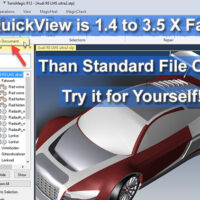
by Brad Strong | Nov 3, 2020 | Blog, CAD Viewing, What's New |
TransMagic’s new ‘QuickView Document’ option lets you open large parts and assemblies significantly faster than the standard ‘File Open’ – a few times faster, in some cases! I opened up several different formats at random, including STEP, CATPart, ACIS and Parasolid, and the average improvement for all four formats was over 2x, but your mileage may vary. Where to Find QuickView Document If you’d like to see how much faster TransMagic’s new QuickView Document feature will open your problematic assemblies, just click the lower portion of the Open button and select ‘QuickView Document’ as shown in Figure 1. Though QuickView is a feature planned for...
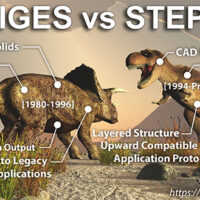
by Brad Strong | Oct 8, 2020 | Blog, CAD Translation, What's New |
Life before IGES and STEP In the mid 1970s there were a handful of CAD vendors, often competing for the same business from large companies such as General Electric and Boeing. Some of the big vendors in those days were Applicon, CADAM, CATI (early CATIA), SDRC, Anvil, ComputerVision and Intergraph. In those days, if Boeing for example was using CATI, and they needed to incorporate some subsystems designed by one of their suppliers (who were using another CAD system such as Applicon, for example), they had to write a translator specifically from Applicon to CATI. As you can imagine, the problem quickly became unmanagable as the number suppliers using different...

by Brad Strong | Sep 30, 2020 | Blog, CAD Systems, What's New |
What CAD Software Is CAD Software refers to software which allows you to create precise 2D or 3D geometry. At the writing of this article, the vast majority of CAD software allows you to design in 3D. Precise 3D geometry is sometimes known as Brep geometry, whereas some less precise software primarily used for entertainment and games is known as polygonal or Visrep geometry. Read more about Brep and Visrep here. The 3D geometry can represent a product to be manufactured, a building to be constructed, a circuit board to be developed, or any other real-world object. While most CAD software is specific to an industry such as MCAD or AEC, some CAD software is...
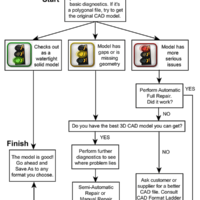
by Brad Strong | Sep 22, 2020 | Blog, CAD Repair, What's New |
3D model repair can cost companies an immense amount of time. Considering the costs to engineer and designer productivity, as well as the potential delays to critical projects, it is critical not to spend any more time or resources on repair than necessaary. As indicated in the flowchart at right, the major steps would include: Start with the best, original CAD model when possible. Run basic diagnostics to determine if the file is good, and to discern what and where the problems might be. Your diagnostic software will usually break results into two or three categories; good, missing geometry, and corrupt geometry. At this point, you may want to run any...
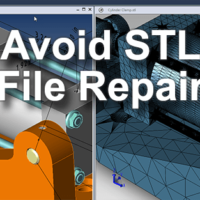
by Brad Strong | Aug 26, 2020 | 3D Printing, Blog, CAD Repair, What's New |
While there are various ways to perform STL repair, it’s best to avoid it in the first place if you can. If you are starting with a CAD file, that’s where the diagnostic and repair process should start, before intelligent geometry is degraded into non-intelligent STL triangles. The further you get from the source information, the further you get from the original design. Just look at the data for yourself; CAD geometry is defined by cylinders, planes, arcs and lines, and can be measured precisely. STL geometry is just a congolmeration of triangles approximating the original CAD geometry. So by first making sure the CAD model is a quality watertight solid, you...







